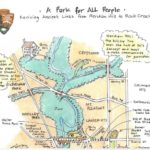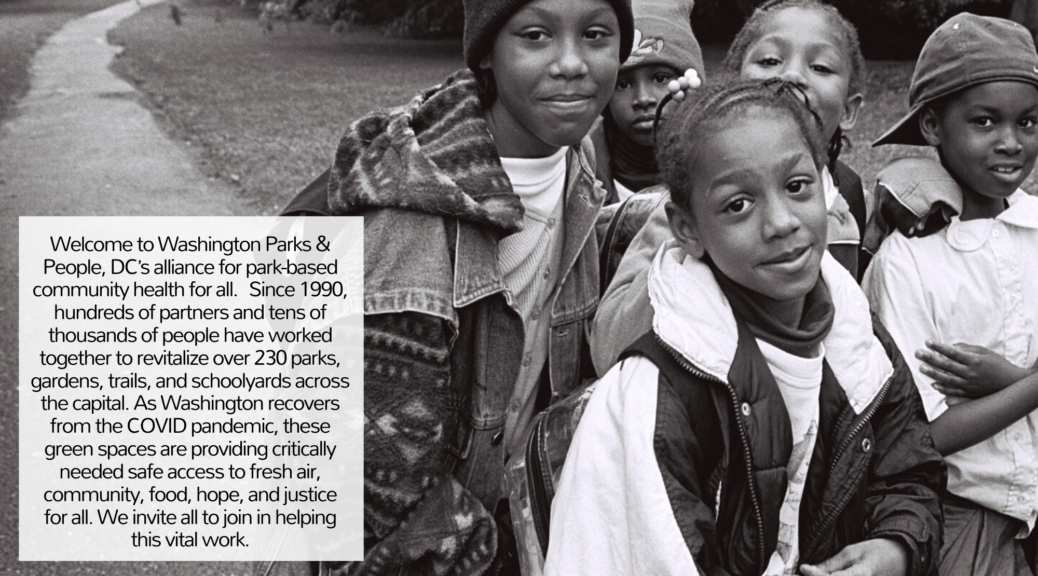Rock Creek Park

All over the world, city parks are on the front lines of meeting the most urgent needs of public health, including physical, mental, nutritional, developmental, civic, environmental, and economic health. DC is the greenest major city in North America, with an unmatched wealth of public green spaces of all kinds available to meet the needs of all our communities. Yet, we are profoundly disinvesting in these resources, especially the critical programs needed to make them safe, vital, and equitable for all. As a result, a parks and greenspace system that could be a world-class model is appallingly lacking in the most basic resources for maintenance, operations, programming, protection, sustainability, and community engagement and accountability. This is especially troubling at a moment when safe access to fresh air and nature is key to surviving the multiple pandemics of COVID-19, racial injustice, food insecurity, unemployment, discrimination, and poverty.
In 30 years of continuing service to communities across DC, Parks & People and our tens of thousands of citywide members, volunteers, partners, and participants have discovered over and over that a healthy, equitable outdoors is essential to the lives of all our people. Yet, all too often, we have seen strong community initiatives for health and safety undermined by disinvestment in the most basic elements of outdoor health, safety, and equity. Too many of our parks in poor black neighborhoods are severely unmaintained, unprogrammed, and unaccountable to their communities. When parks become blights, they hurt everyone around them. Instead, parks and green spaces can be green engines to help meet essential community needs: healthy stress relief, violence prevention, food, play, exercise, cognitive development, job training, readiness, employment, transportation, art, and community.
Here are ways to boost public safety, health, and justice by shifting funds from to community- and park-based approaches, at fractions of the hourly cost of far less effective police-based approaches:
- Investing in restoring the park patrols of DPR’s Urban Park Ranger program, a proven unarmed mentorship approach to lifting up youth and promoting park safety and peace that has sadly been removed from park patrols and programs for a number of years;
- Investing more, not less, in DPR’s Roving Leaders Program, a gang intervention program based in part in public housing, especially in park-based programming that the program has cut back;
- Investing more in DOH’s drug intervention and needle exchange programs to interrupt the cycles of addiction and violence, and incentivizing health providers to weave park prescriptions into all of their care;
- Getting the Office of the Attorney General to counter discrimination against employing and contracting with low-income Black residents that is a major concern with DC Water, parts of the National Park Service, many businesses, and adjacent jurisdictions such as Bethesda;
- Investing more in DDOT’s contracted trail patrol program so that can serve park corridors year-round;
- Investing more in outdoor classrooms, service learning, and other programming by DCPS, the DC Arts Commission, and Serve DC so that our parks can come alive for our youth;
- Investing more in park-based workforce development by DOES and community partners, especially through Project Empowerment and other efforts to help returned citizens gain lasting employment, and linking these jobs to the DDOT Urban Forestry Administration through community and non-profit partners to support forest reclamation through massive invasive weed removal and native tree and habitat planting;
- Investing more in food security through intensive community agriculture via the DOEE Office on Urban Agriculture and community partners, modeled after sites such as Washington Parks & People’s Marvin Gaye Community Greening Center that simultaneously grow food, jobs, arts, learning, environmental sustainability, and community year-round;
- Investing more in park- and community-based youth development and mentorship through community partnerships and DYRS;
- Removing the discriminatory disincentive to city contracting with nonprofit community partnerships in the city’s contract and procurement policies, thus enabling funds earned in community contracting to be continually reinvested in the community;
- Shifting the MPD’s failing Environmental Crimes Unit function to a more empowered enforcement arm of the DC Department of Energy and the Environment to stop dumping on poor neighborhoods exemplified by such long-entrenched illegal dumping sites as the toxic dump at 4214 Hunt Place NE next to the Watts Branch stream and Marvin Gaye Park;
- Shifting DGS’s weak and unaccountable land stewardship functions to the DC Department of Energy and the Environment, and boosting contract compliance and equity on grass mowing, park lighting and playground repairs, graffiti removal, and trash pick-up; and
- Investing in community-based park partnerships such as Friends of Oxon Run Park, Friends of Kenilworth Aquatic Gardens, Ward 8 Woods, Washington Parks & People, and other APACC member organizations to make the city’s vast parks system into zones of peace and opportunity for all.

